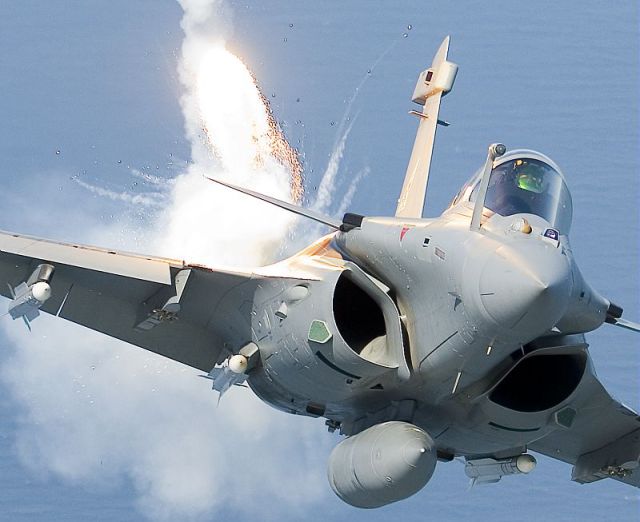By Bharat Karnad
The Indian Air Force has a proud 70-year record of BONE-HEADED acquisition decisions. Among them the purchase of the under-powered British Jaguar DPSA at the expense of the entirely indigenously-designed but supposedly “under-powered” Marut HF-24 Mk-II (aka HF-73) and, in the process, registering a collateral kill as intended of the indigenous Indian combat aircraft industry for nearly two generations (until an indigenous capability was revived from zero baseline with the Tejas LCA; preferring the MiG-23 BN rather than a squadron of the Tu-22 Backfire bombers painted with IAF roundels that were ready to take-off for India had the Air Marshal Sheodeo Singh mission in the early summer of 1971 made the decision to take it as the Russians were urging it to; No Tu-22, so no follow-on aircraft to the medium range Canberra bomber, and hence, disastrously, the complete elimination of the bomber from the IAF fleet; a decision not corrected by leasing the Tu-160 Blackjack; (4) the contretemps over inducting the Tejas LCA and derivatives in large numbers as the main bulk aircraft and, most recently, (5) the Rafale buy.
Because IAF has been so critical about all the things ostensibly wrong with the Tejas, maybe we should put the inordinately expensive Rafale combat aircraft that makes no cost-benefit sense whatsoever, under similar scrutiny, and see all the things structurally and otherwise wrong with this French item.
Let’s focus in this post on the canards on the Rafale. Canards are the rear horizontal wings in normal planes that are moved forward to near the nose for better aircraft control and hence featured in some combat aircraft like this French plane. It can contribute to lift, replacing the horizontal stabilizer and, therefore, reducing overall drag. So, what’s the problem? Unlike the Su-30MKI IAF’s front line advanced air dominance/air superiority fighter, which also sports canards, but uses its 2-D thrust vectoring nozzle for braking operations, the Rafale uses its canards. Using the canards thus generates enormous stress and strain on that part of the aircraft frame and can lead to stress fracture in the canards and result in cracks.
Not sure if the IAF flew the Rafale, during the MMRCA test trials, in a sustained fashion over months in summer to see how the aircraft stacked up against the competition. Had they done so, they’d have witnessed the canards starting to fall apart. Combat aircraft experts give it 2-3 months of regular takeoff and landings in the hot tropical conditions of the subcontinent, for this problem to become apparent. Then what?
Replacing fractured and disabled canards is not an easy thing and when the entire fleet is so afflicted, as it will be, the IAF will have more of the Rafale down, resting in their airconditioned hangars than pulling duty in the skies. Soon, because it cannot be used too intensively or extensively, it will be reduced to another grand and expensive piece of hardware that, in terms of actual ready use, cannot reasonably be counted in the air order-of-battle.
So much for the Rafale’s low down-time and quick-turnaround capability!!! IAF doesn’t see this awful problem heading its way and that’s par for the course. But the plane’s producer, Dassault, must be licking its chops in anticipation, because every canard repair and refit will require the aircraft to be ferried to the company’s production line in France. One can safely assess the additional costs of this major structural flaw over the aircraft’s lifetime for the 36 Rafales to be in billions of Euros.
As Government of India is clueless, it will do what grin and bear it? Won’t the IAF then complain about a degraded fighter force and about not enough fighter aircraft in the air? Of course, it will but only to pitch in for more Rafales in the belief that one horrible mistake deserves a cascade of the same mistake!
Incidentally, thanks to the intervention by the IAF in the design stage of the LCA and insistence on a canard on the Tejas a movement headed by an ex-test pilot Air Marshal M. Matheswaran, who retired as Deputy Chief at HQ Integrated Defence Staff, the entire project was delayed by several years. The insertion of the canard in the original design required a major reworking of it, and the ultimate decision by its designers, who knew better but tried to humour its customer, to do away with it, cost the project time and hurt the LCA delivery schedule. These delays were then used by the IAF and Matheswaran in particular, and an ignorant/illiterate press and media, in general, to slam the Tejas.
This same Matheswaran after retirement was recruited by HAL as “adviser” for the LCA programme why is not clear. He has since jumped ship to something lots more lucrative a sinecure with Anil Ambani’s Reliance Defence that has signed up with Dassault for offsets to produce some knick-knacks that will go into the IAF Rafales to be manufactured minus any transfer of technology wholly in France. Neat!


